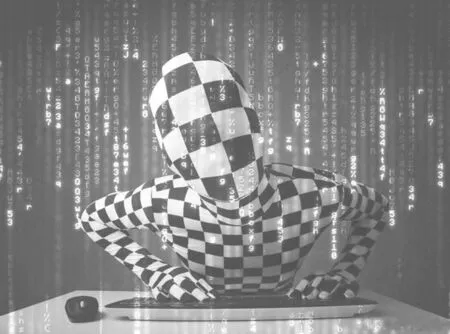Is Digital Hoarding a Mental Disorder?数字囤积是精神疾病吗?
2018-01-06伊丽莎白巴勒莫莫昕
文/伊丽莎白·巴勒莫 译/莫昕
By Elizabeth Palermo1
Is Digital Hoarding a Mental Disorder?数字囤积是精神疾病吗?
文/伊丽莎白·巴勒莫 译/莫昕
ByElizabeth Palermo1
A man who takes thousands of digital pictures weekly and spends hours every day organizing the photos on his computer could have a condition that,until now, has never been described in medical literature. The patient might have “digital hoarding disorder,” according to the authors of a recent report on the man’s case.
[2] The 47-year-old man lives in the Netherlands, and doesn’t only collect digital photos; he collects physical objects, too. He has been diagnosed with tactile hoarding disorder, which means he holds onto objects ranging from old bicycle parts to scraps of useless paper.The clutter fills his Amsterdam apartment and prevents him from inviting anyone over to visit, according to the report, which was published in the journalBMJ Case Reports2网络期刊(http://casereports.bmj.com),专为医疗从业者和研究者提供常见和罕见病症在临床方面的重要信息。.
某男子每周拍摄数千张数码照片,每日花数小时在电脑上整理照片。迄今为止尚未有医学文献描述这种症状。据该男子最近的一项病例报告称,他可能患上了“数字囤积症”。
[2]这名男子47岁,住在荷兰,他不光收集数码照片,还囤积各种物品。他被诊断为患有实物囤积症,也就是说他收集从旧自行车部件到废纸片等各类物件。据《英国医学杂志病例报告》期刊发表的报告称,他位于阿姆斯特丹的公寓一片狼藉,令他无法邀请别人到家里做客。
[3]不过,这个男人的囤积行为大多发生在数字领域——他在电脑和购买的四个硬盘上,存储了数万张照片。
[3] But much of the man’s hoarding occurs in the digital realm—he stores tens of thousands of photographs on his computer, and the four hard drives he has purchased.
[4] His doctors think his tendency to hold onto3hold onto(替别人或更长时间地)保存某物。so many digital files is a problem, according to the report. Dealing with all of these electronic files keeps the man from doing other things,like cleaning his home, going outside or sleeping, they wrote.
[5] “He enjoyed taking the photos.However, the processing and saving of the digital pictures caused suffering and distress,” Dr. Martine van Bennekom,a psychiatry resident at the Academic Medical Center in the Netherlands who treated the man and is the lead author of the report, told Live Science.
[6] The man’s inability to let go of4let go of 放开,松手。digital things—and the fact that this inability affected his life in a negative way—led van Bennekom and her coauthors to suggest that digital hoarding should be “classified as a subtype of hoarding disorder”.
An informal disorder
[7] Right now, digital hoarding isn’t an established condition like hoarding disorder, which is included in the DSM-5, the reference manual that doctors use to diagnose mental disorders. But this distinctly modern kind of hoarding is something that a lot of people are talk-ing about. The pseudo5pseudo假的,虚伪的。condition even has its own Wikipedia page.

[4]该报告称,他的医生认为他囤积如此大量数字文件的倾向是一种病。病例报告中写道,处理所有这些电子文件让这个男人无法顾及其他事项,如清洁房间、出门或睡觉。
[5]荷兰学术医学中心的精神病专家马丁·范本内科姆是这个男人的治疗医生,也是该报告的主要作者,他告诉生命科学网站:“他喜欢照相。但是,处理和存储这些数码照片给他带来了折磨和痛苦。”
[6]该男子无法摆脱数字产品,因此他的生活受到负面的影响,这一现实令范本内科姆医生和她的合著者提出建议,将数据囤积“列为囤积症的一类”。
非正式病症
[7]目前,数字囤积并不像囤积症那样,是一种已经确定的病症,囤积症已经列入DSM-5,即医生用来诊断精神疾病的参考手册。然而,很多人都在讨论这种特殊的现代囤积行为。这种伪病症甚至拥有自己的维基百科页面。
[8] In the case report, van Bennekom and her colleagues suggest making digital hoarding an official disorder. They say this would make the disorder easier to detect.
[9] Yet, not all mental health experts agree. Making digital hoarding a disorder would be “premature,” said David Tolin, a clinical psychologist and director of the anxiety disorders center at the Connecticut mental health center, The Institute of Living.
[10] The new case report is based on the experiences of just one person—a person who has tactile hoarding disorder.
[11] It isn’t yet clear whether there are many people who hoard only digital files, Tolin said. And since there isn’t a newspaper-hoarding disorder for people who collect only newspapers, or a clothes-hoarding disorder for people who collect only clothes, it isn’t clear why digital hoarding deserves a special categorization, he added.
[12] And there’s another problem with labeling the hoarding of digital stuff as a mental disorder, Tolin noted. Patients who hoard physical objects, like photographs, are sometimes encouraged by their doctors to go digital. Converting photographs into files gives patients more living space in their cluttered homes, he said.
[8]在该病例报告中,范本内科姆医生及其同事建议将数字囤积定为正式的疾病。他们说,这会让这种疾病更容易被诊断。
[9]然而,不是所有的心理健康专家都认同他们的说法。康涅狄格州心理健康中心生活研究所临床心理学家和焦虑症中心主任戴维·托林说,将数字囤积定为疾病可能“并不成熟”。
[10]这个新的病例报告只基于一个人的经历,一个患有实物囤积症的人。
[11]托林说,目前尚不清楚是否还有许多只囤积数字文件的人。他补充说,既然没有为那些仅收集报纸或衣物的患者设立报纸囤积症或衣物囤积症,那么,为什么要单单为数字囤积症进行特别分类,其理由并不明确。
[12]托林提到,给囤积数字产品贴上精神疾病的标签,还有另一个问题。囤积实物(如照片)的患者,有时是受医生引导而转向数码照片的。他说,将照片转换为数字文件给患者凌乱拥挤的家中带来更多的生活空间。
[13] If digital hoarding became an official disorder, it’s unclear whether doctors would still want to recommend such measures to patients. This question and many others should be answered before digital hoarding makes its way6make one’s way 前往,前进。into the diagnostic guidebooks, Tolin said.
Digital distress
[14] Tolin said he agrees with van Bennekom that people who feel distressed by their abundance of digital possessions are, in fact, hoarders. Feeling distressed or being impaired by too much stuff is what makes hoarding hoarding.
[15] “Lots of people have quirky behaviors, but we don’t go around calling those disorders,” Tolin said. “If somebody was just hoarding digital objects,but their house was relatively clean,”then they may be impaired by their behavior, but they may also just have a quirk about saving digital stuff, he said.

[13]如果数字囤积成为正式的疾病,那么医生是否仍想推荐这些措施给患者,就成为疑问。托林说,这个问题及许多其他问题有了答案之后,数字囤积才能正式列入诊断指导手册。
数字折磨
[14]托林说,他赞同范本内科姆的看法,那些被大量数字信息所折磨的人们事实上就是囤积者。拥有太多东西而感到备受折磨或损害正是囤积症的特征。
[15]“许多人都有古怪的行为,但我们不会将此称作疾病。”托林说,“如果某人只是囤积数字内容,而他的房子却还很干净”,那么,他们可能受自己的行为损害,但也可能只是有存储数字内容的怪癖。
[16] The patient in the case report was truly impaired by his digital hoarding,but other people might not be impaired by similar behaviors, said Larry Rosen,a psychology professor at California State University, Dominguez Hills.
[17] For example, if you have 7,000 unread emails in your inbox, but you don’t give a hoot7not give a hoot丝毫不在乎。, then you’re not a hoarder, said Rosen, whose research focuses on the relationship between mental health and technology.
[18] People who are concerned they may have a problem should ask themselves whether all their virtual stuff is causing them anxiety, he said. Those who have anxiety might find it helpful to make a plan to deal with their digital clutter, or find someone who can help,he said.
[19] But if you’re just a little overwhelmed by the 7,000 unread emails in your inbox, and are concerned about that the time it would take to sort through them all, then Rosen recommends an easy way to reduce that anxiety-inducing number.
[20] “Go on and trick your email system into calling them all ‘read.’ And then it’ll say zero. There goes the stimulus that creates the anxiety,” he said.
[16]加州州立大学多明戈斯山分校心理学教授拉里·罗森说,该病例报告中的患者确实受到其数字囤积行为的负面影响,但其他有类似行为的人可能并不会受到影响。
[17]罗森说,例如,如果你的收件箱中有7000封未读邮件,但你根本无所谓,那你就不是个囤积者。罗森主要研究心理健康和科技的关系。
[18]他说,那些担心自己可能有问题的人应该问问自己,是否他们所有的虚拟事物都会导致自己的焦虑。他还说,那些焦虑的人可能会发现,制订一项计划来处理他们的大量数字文件,或向别人求助,会有一定的用处。
[19]然而,如果你只是对收件箱里7000封未读邮件感到有点不知所措,担心清理这些邮件会花太多时间,罗森推荐了一个简单的方法来减少导致焦虑的数字。
[20]他说:“去设置你的电子邮件系统,将所有未读邮件设为‘已读’。未读邮件的数量就变为零。那么令你焦虑的源头就消失了。”
1生命科学网站(www.livescience.com)编辑。
(译者曾获第五届“《英语世界》杯”翻译大赛优秀奖)
